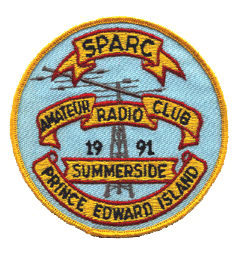Thanks to Ham Radio School for this information!
CTCSS
Many FM repeaters operate using carrier squelch, which means that the repeater keys up any time it hears a signal on its input frequency. I’ve heard some radio technicians refer to this as “going naked”, since any signal that comes along can activate the repeater. In today’s world, we have many electronic devices with digital circuitry spewing out all kinds of frequencies, just waiting to trigger a receiver. (Walk around a typical office building with a handheld radio…the squelch opens up when you pass a computer or other electronic device due to the frequencies being radiated.)
A more controlled squelch system is called Continuous Tone Coded Squelch System (CTCSS). The idea is very simple…the FM transmitter includes a continuous tone on the transmitted audio. When the receiver (repeater) hears the required tone, the squelch opens. If there is no tone, the receiver stays squelched, no matter how strong the signal is at the receiver.
To make the system flexible, 50 unique tones are defined so that different systems can use their own unique tones. (Some radios do not implement all of these tones, so check your radio manual.) This tone system is sometimes used in the land mobile service to allow multiple users to share the same repeater without having to listen to the other users on the channel. Each user group is assigned its own specific CTCSS tone.
Table 2. Standard CTCSS Frequencies in Hz (not all radios implement all of these tones)The CTCSS frequencies are in the range of 67 Hz to 254 Hz. Unlike DTMF tones, which are sent momentarily as the key is pushed, CTCSS tones are sent any time the transmitter is on. This means that the tones will be present with the normal voice signal. To keep the transmitter from over deviating, we usually set the tone deviation at around 600 to 800 Hz. Because the tone is active the entire time the transmitter is on, we’d like to keep it from being heard in the receiver. Although we call these frequencies subaudible they are within the hearing range of most people. Voice communication systems are designed to use the frequency range of 300 Hz to 3 kHz, which allows for normal speech to be understood. As long as we filter out the frequencies below 300 Hz before the signal gets to the radio speaker, the user won’t notice the presence of the CTCSS tone, but we’ll still have the desired voice frequencies. Virtually all modern VHF/UHF FM transceivers for amateur radio use include CTCSS encode and decode as standard features.

DTMF Tones
One of the most common set of signaling tones is called the Dual Tone Multi-Frequency (DTMF) tone system, often known as Touch-Tones. This system was invented for use in telephone systems by AT&T in 1963. Today, the pleasant dual-tone sound is very familiar to most people as part of everyday telephone use. When a key is pressed, two sine waves are produced, as defined by this matrix:
For example, pressing the number 6 produces these two frequencies: 770 Hz and 1477 Hz. The frequencies listed in the left hand column are called the “low group”, while the frequencies shown on the top are the “high group”. Most telephones will just have the keys for 0 through 9, * and #. The amateur radio world makes use of a fourth column of keys labeled A, B, C and D to provide some additional signaling options.
These frequencies were carefully chosen so that no frequency is a harmonic of another, which would have increased the possibility of a decoding error. The frequency accuracy is specified at 1.5%, fairly tight, to keep the tones separated.
Most modern FM radios include a DTMF encoder as part of the radio. Mobile rigs tend to have the keypad built into the microphone and handheld radios have a keypad on the front of the rig. DTMF tones are most commonly used for sending commands over the air, including repeater control, autopatch access and IRLP access. DTMF can also be used for selectively calling or alerting another station.
Most mobile transceivers implement the DTMF keypad on the microphone. (Image courtesy Icom America, Inc.)
DTMF is an “in band” signaling system, so so we will normally hear the tones being transmitted on the air just by listening on the frequency. Be aware that it is common for repeaters to filter out DTMF tones so they don’t pass through the repeater, so you may not hear the tones on the repeater output. The above is an excerpt from the session on “Get the Right Signal Tone” by Bob K0NR at The Ham Radio School ( https://www.hamradioschool.com )
To see the complete article go to The Ham Radio School site and see how you can sign up for the course: https://www.hamradioschool.com
